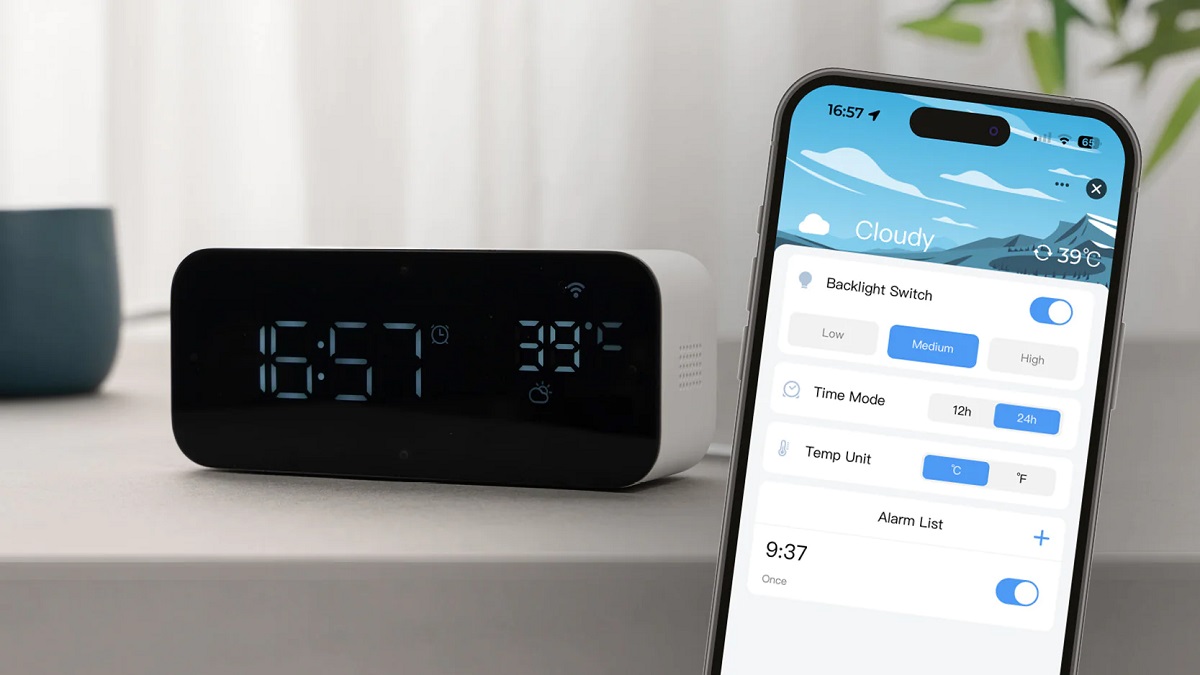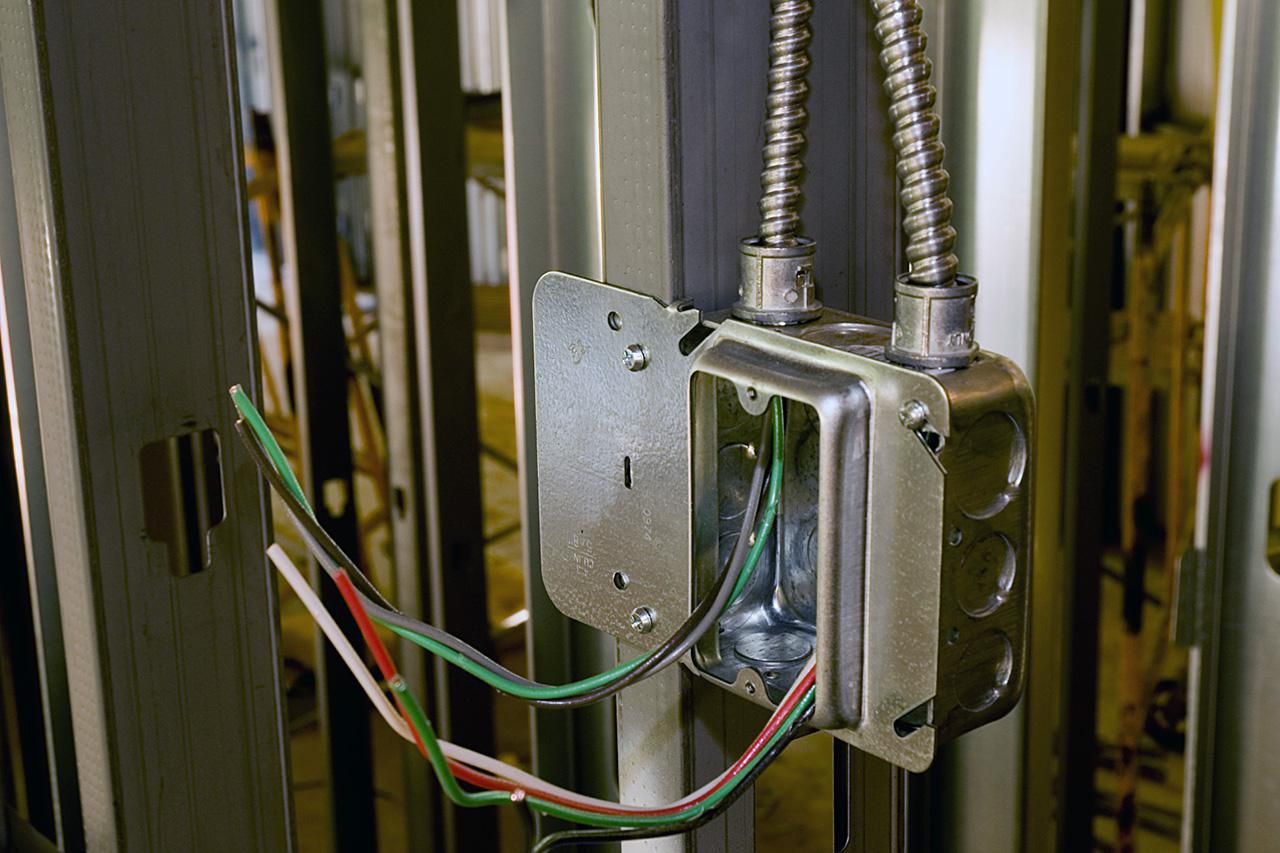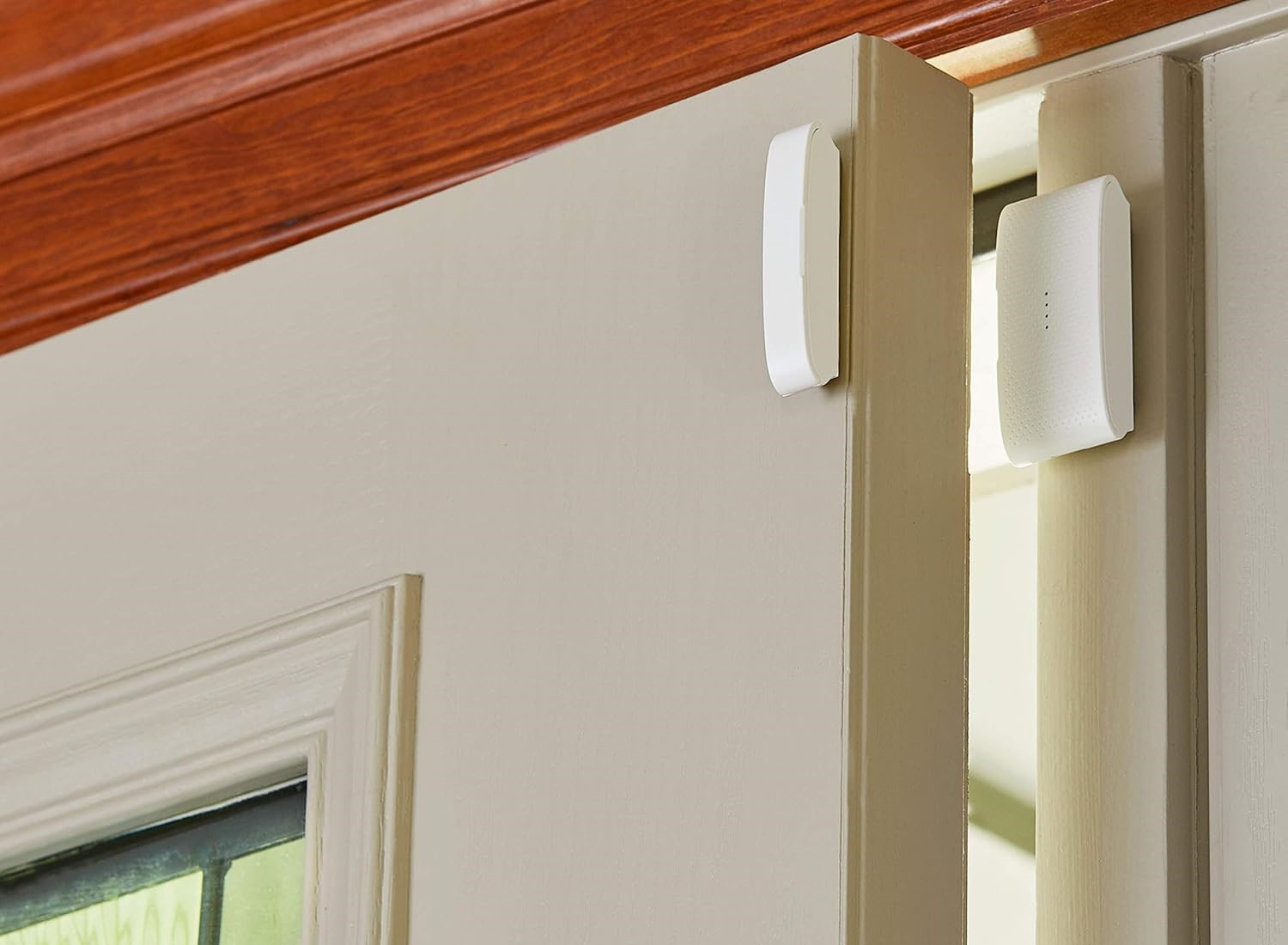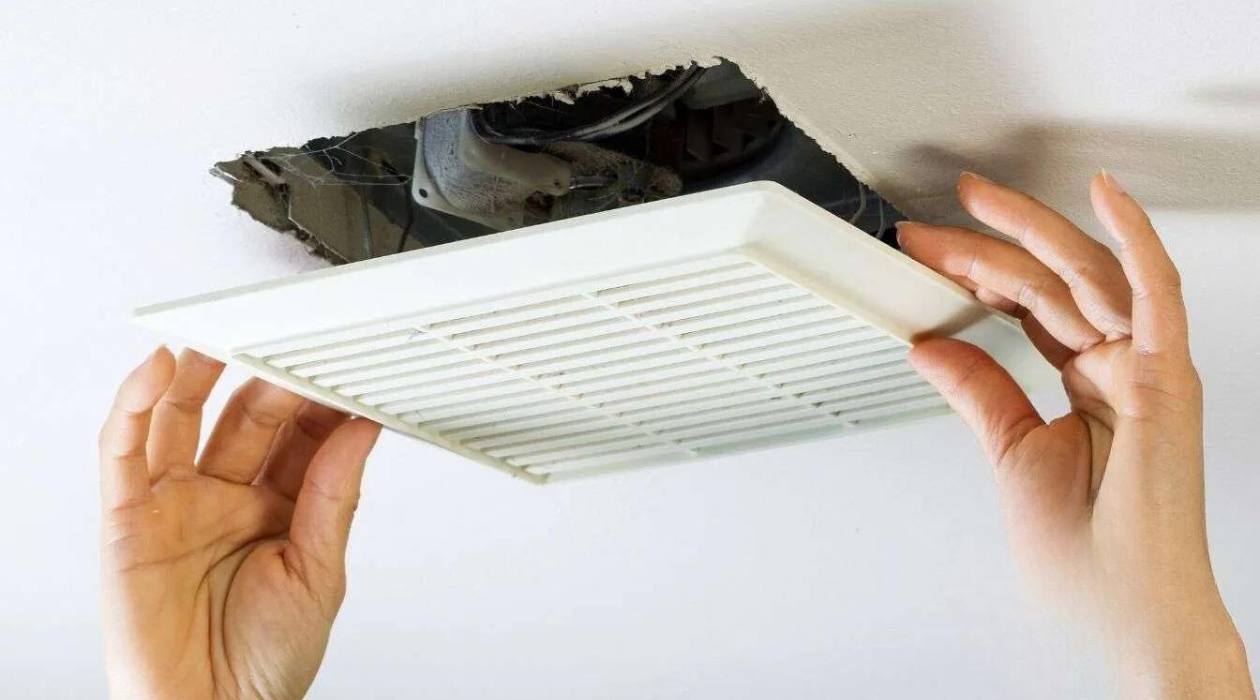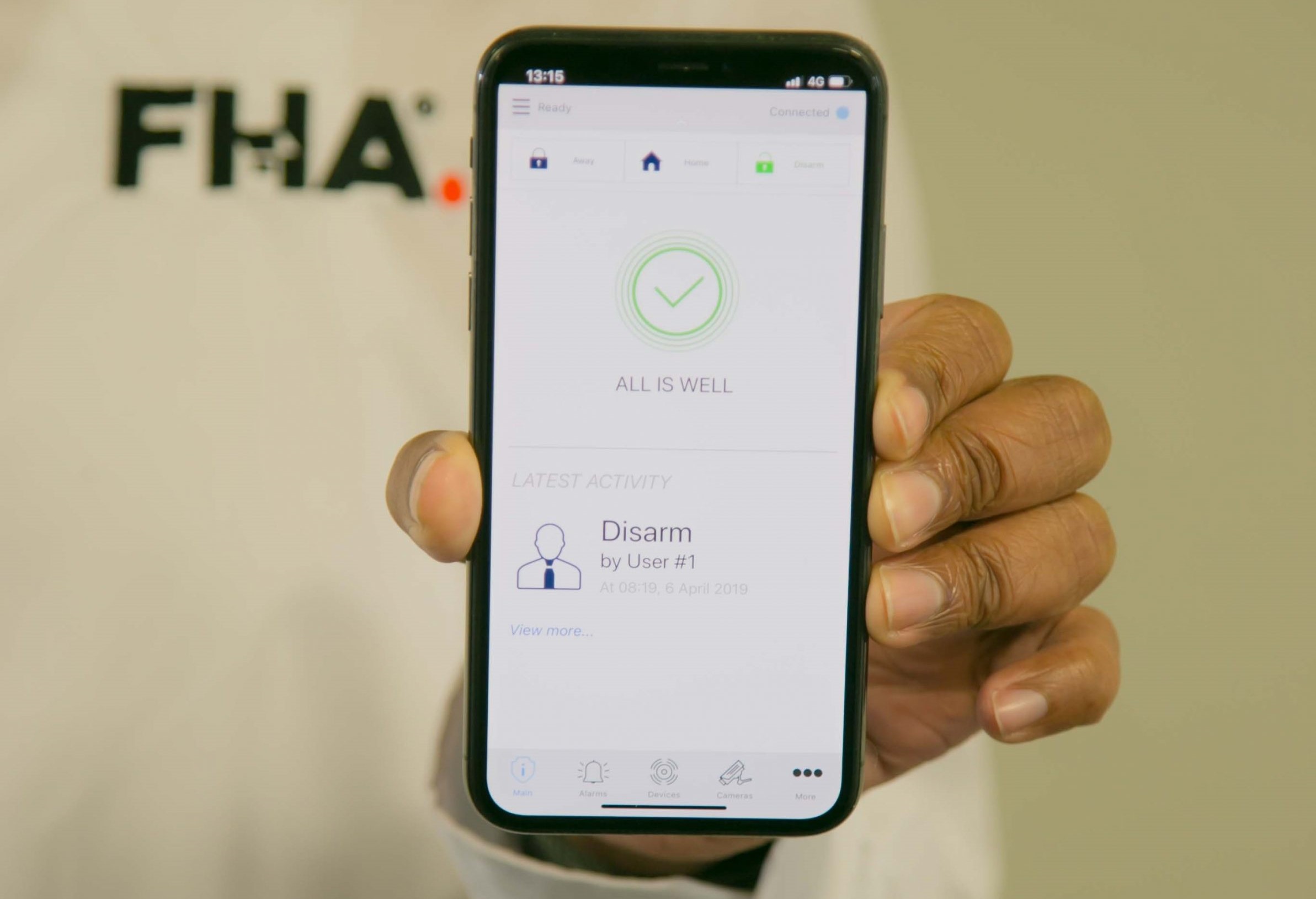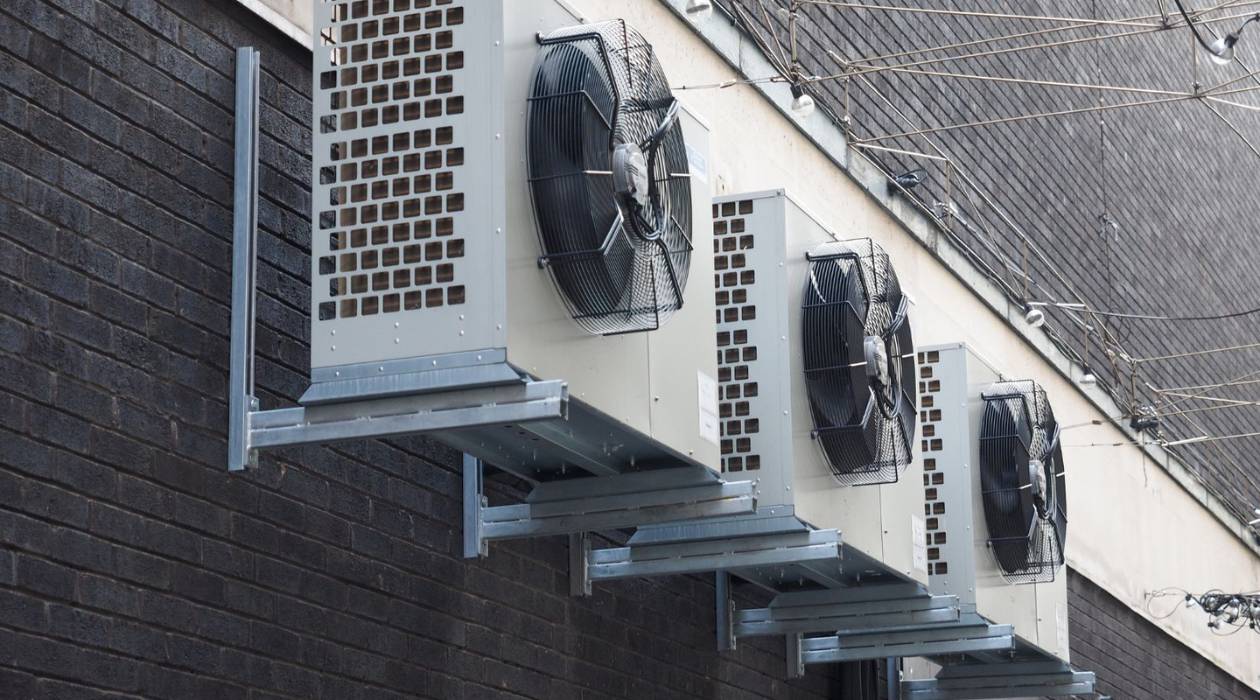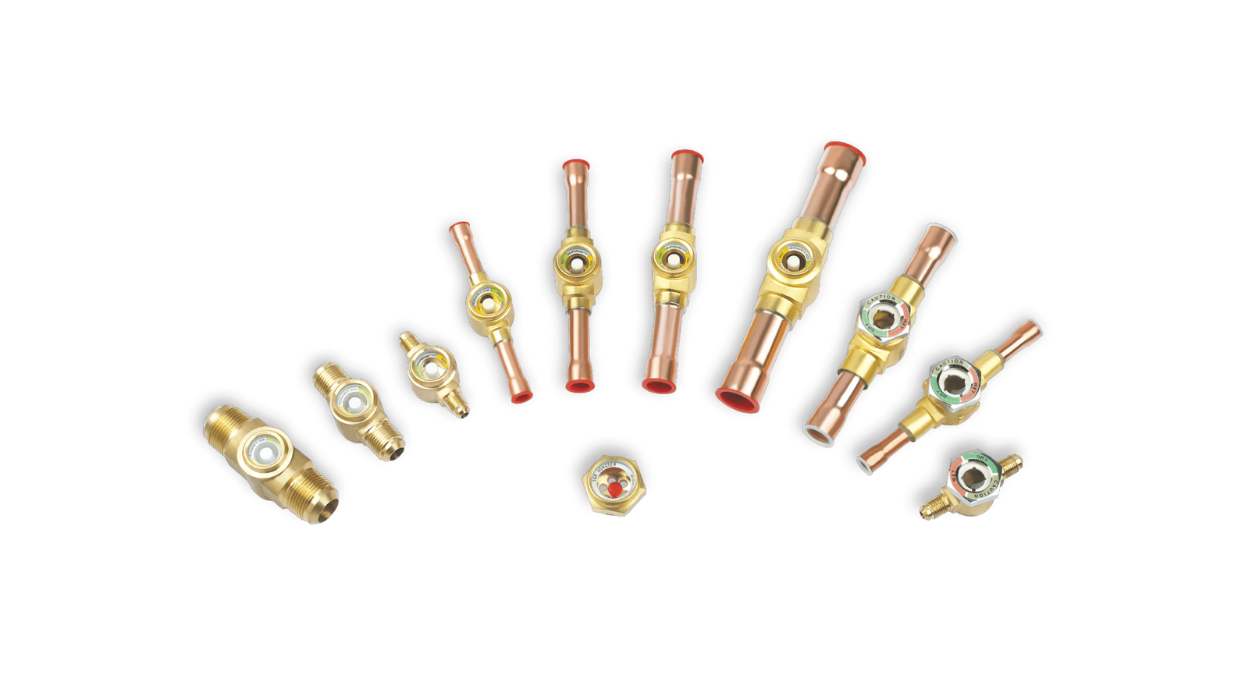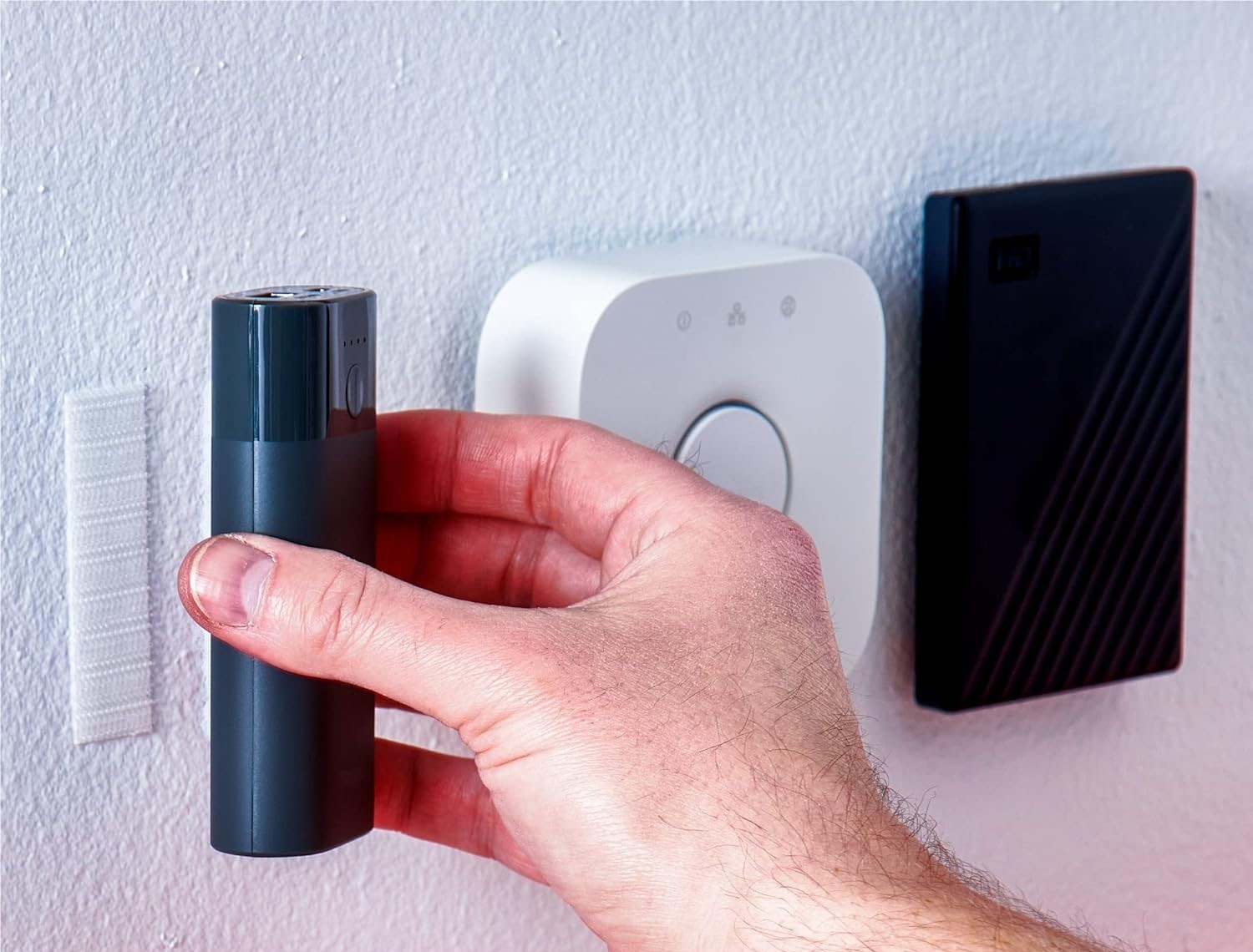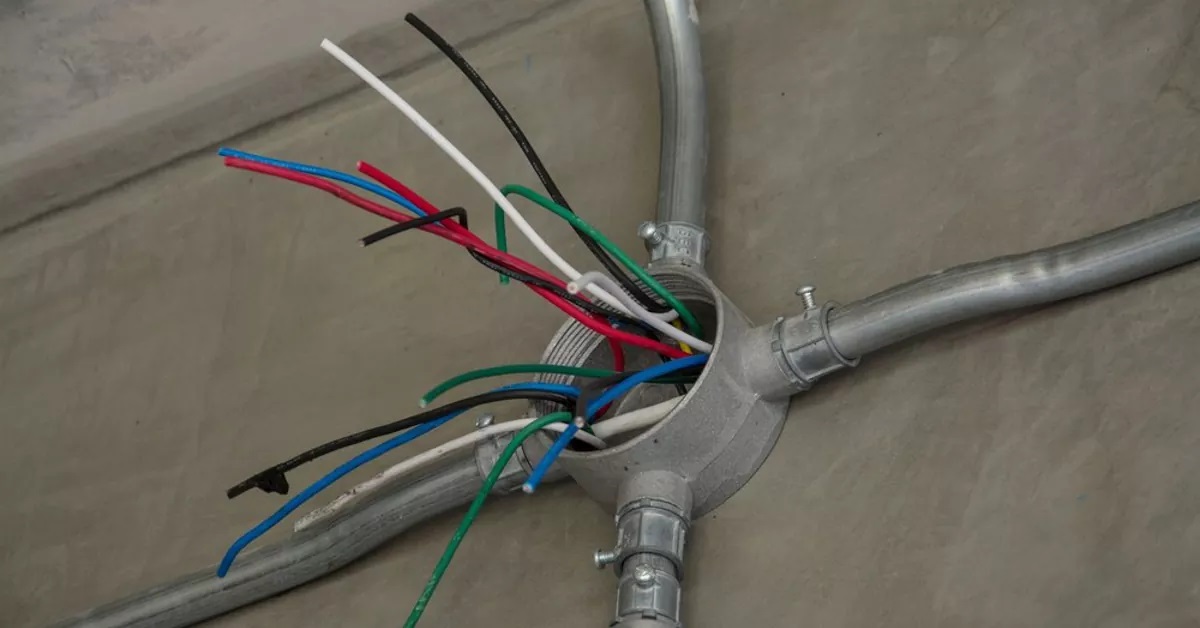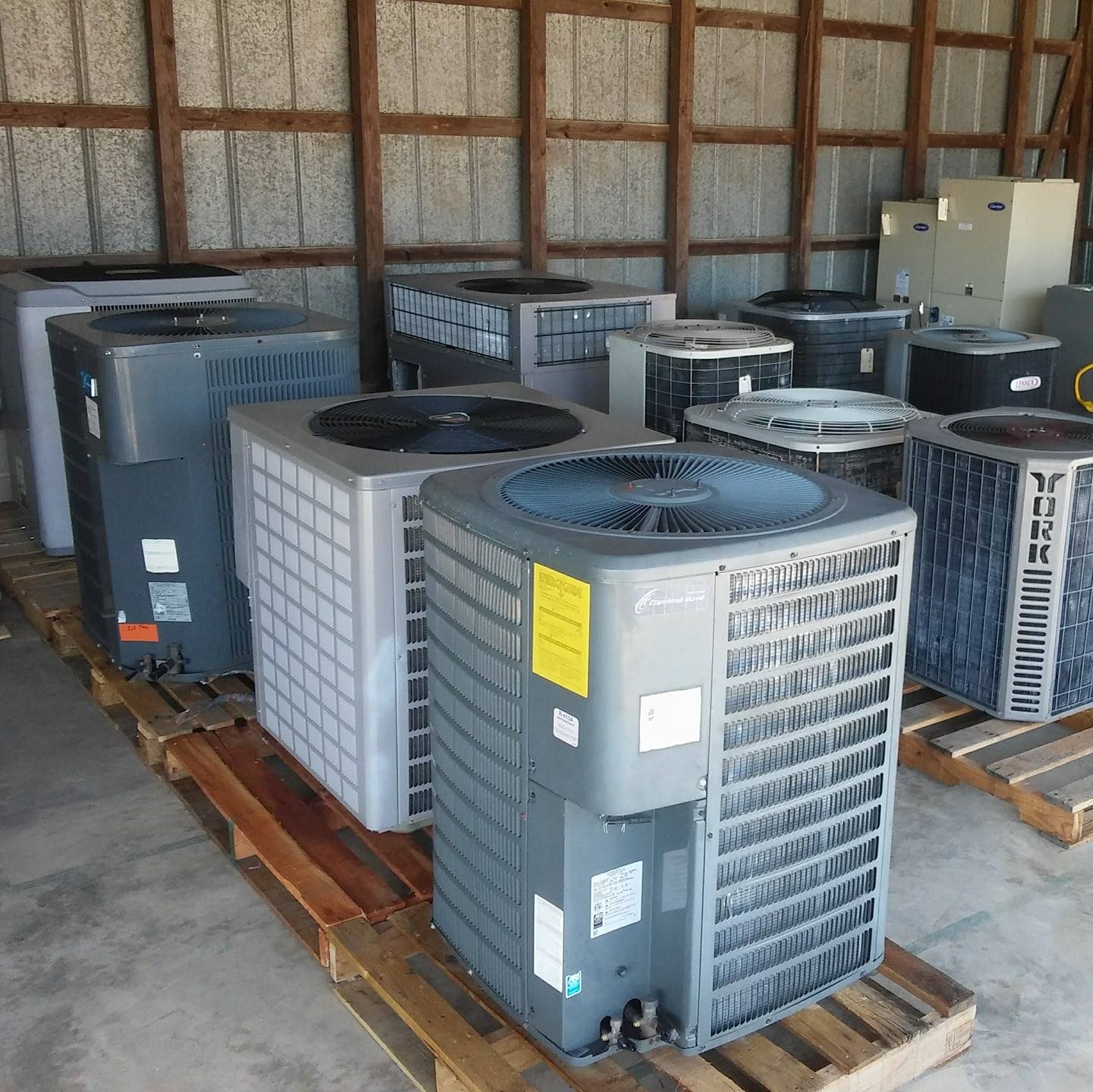Home>Home Security and Surveillance>How To Use Tyco Alarm Systems
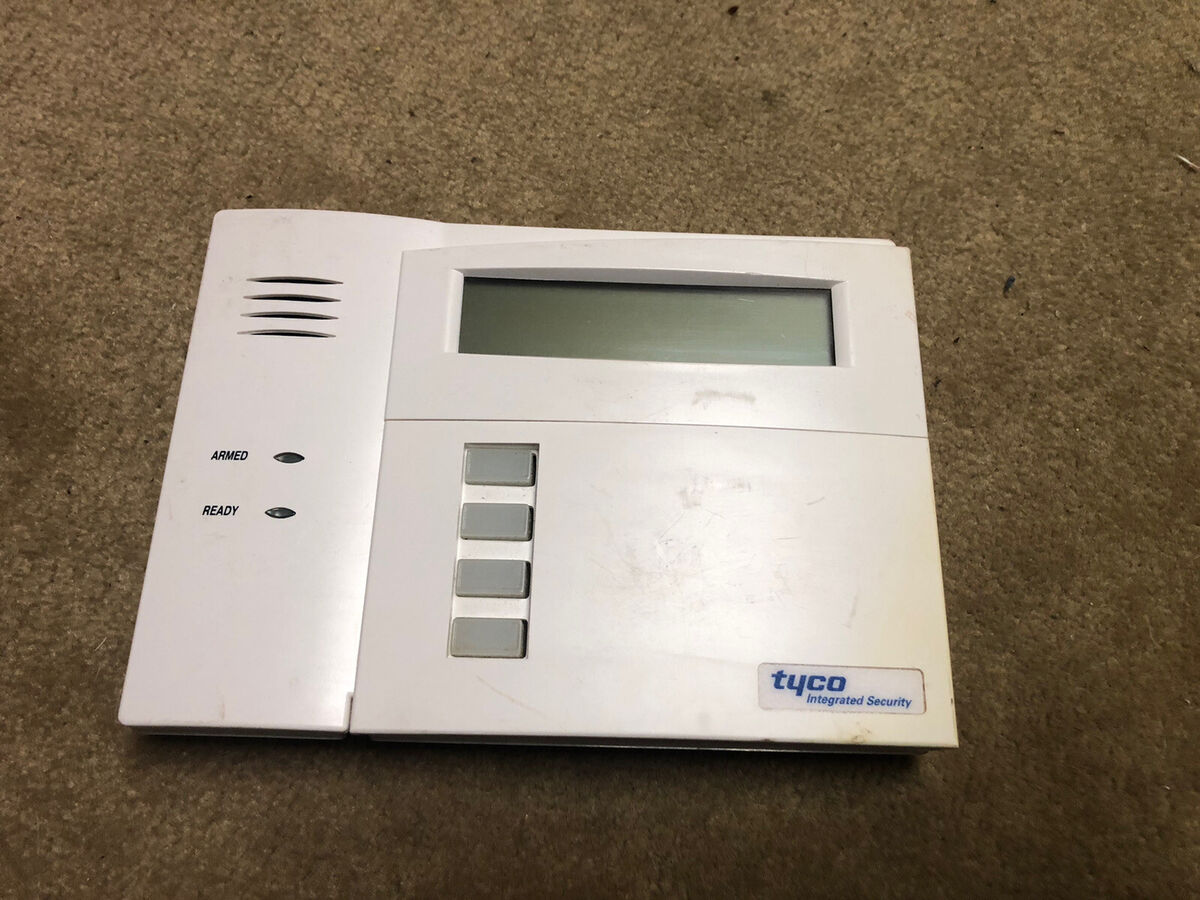

Home Security and Surveillance
How To Use Tyco Alarm Systems
Modified: May 6, 2024
Learn how to effectively use Tyco Alarm Systems for home security and surveillance. Protect your home with the latest technology and advanced features.
(Many of the links in this article redirect to a specific reviewed product. Your purchase of these products through affiliate links helps to generate commission for Storables.com, at no extra cost. Learn more)
Introduction
Welcome to the world of home security and surveillance! Protecting your home and loved ones is a top priority, and Tyco Alarm Systems can provide you with the peace of mind you deserve. Whether you are a homeowner looking to secure your property or a business owner in need of comprehensive surveillance, Tyco Alarm Systems offer a wide range of options to meet your specific needs.
In this article, we will explore the various types of Tyco Alarm Systems available, the basic components that make up these systems, how to arm and disarm the system, set up user codes, understand alarm zones, customize alarm settings, troubleshoot common issues, and more. By the end of this article, you will have a comprehensive understanding of how to effectively utilize Tyco Alarm Systems to protect your home or business.
Before we delve into the details, let’s take a brief overview of the different types of Tyco Alarm Systems available. Tyco offers a diverse range of security and surveillance solutions suitable for residential, commercial, and industrial applications.
For homeowners, Tyco Alarm Systems provide reliable protection against intrusions, fire, and other emergencies. These systems offer a wide range of features, including motion sensors, door/window contacts, surveillance cameras, smoke detectors, and more. With real-time monitoring and remote access capabilities, you can stay connected and in control of your home’s security, even when you are away.
For businesses, Tyco Alarm Systems offer robust solutions to safeguard employees, assets, and property. Whether you run a small retail store or a large corporate office, these systems can be customized to meet your specific security needs. From access control and video surveillance to alarm monitoring and panic buttons, Tyco Alarm Systems can help prevent theft, unauthorized access, and potential threats to your business.
Now that we have a glimpse of the types of Tyco Alarm Systems available, let’s move on to explore the basic components that make up these systems.
Key Takeaways:
- Secure your home or business with Tyco Alarm Systems, offering wireless, hardwired, and DIY options. Customize settings, set up user codes, and understand alarm zones for comprehensive security.
- Easily arm and disarm your Tyco Alarm System, set up user codes, and troubleshoot common issues for reliable home or business protection. Enjoy peace of mind with customizable security solutions.
Read more: How To Use Alexa As An Alarm Clock
Types of Tyco Alarm Systems
Tyco offers a wide range of alarm systems designed to cater to different security needs. Let’s take a closer look at some of the popular types:
- Wireless Alarm Systems: These systems offer the convenience of easy installation without the need for extensive wiring. Wireless sensors and devices communicate with the control panel using radio frequency signals, making them a flexible and versatile option for both residential and commercial applications. They are also ideal for renters who require a portable security solution.
- Hardwired Alarm Systems: Hardwired systems are connected by physical cables, providing a reliable and secure connection. This type of system is typically installed during the construction phase of a building or during major renovations. Hardwired systems offer a high level of stability and can be seamlessly integrated with other home automation features.
- Hybrid Alarm Systems: Hybrid systems combine the best of both worlds, offering a combination of wireless and hardwired components. This allows for flexibility in installation, as wireless devices can be added to an existing hardwired system or vice versa. Hybrid systems are suitable for both residential and commercial applications where a mix of wired and wireless devices is required.
- IP-Based Alarm Systems: IP-based systems utilize the power of the internet to connect and control various security devices. With IP-based alarm systems, you can remotely view live video feeds, control access to your property, and receive instant notifications via email or mobile app. These systems are highly scalable and can be easily integrated with other IP-based technologies.
- DIY Alarm Systems: Tyco also offers do-it-yourself alarm systems, which are designed for individuals who prefer a self-installation option. These systems come with user-friendly instructions and can be easily set up without professional help. DIY alarm systems are typically wireless and offer a cost-effective solution for those on a budget.
Each type of Tyco Alarm System has its own set of advantages and is suitable for different security requirements. Now that we know about the different types of systems, let’s dive into the basic components that make up a Tyco Alarm System.
Basic Components of Tyco Alarm Systems
Tyco Alarm Systems consist of several key components that work together to provide comprehensive security. Understanding these components will give you a clear idea of how the system functions and how to make the most of its features. Let’s explore the basic components:
- Control Panel: The control panel is the brain of the alarm system. It receives signals from various sensors and devices throughout your property and communicates with the monitoring center or alerts you directly, depending on the system setup. The control panel allows you to arm and disarm the system, customize settings, and receive notifications.
- Keypad: The keypad is used to easily interact with the control panel. It typically has a numeric keypad for entering codes, and may also feature buttons for arming, disarming, and activating specific functions, such as a panic button. The keypad is usually located near the main entrance for convenient access.
- Sensors: Sensors are an essential component of any alarm system. They detect specific events or conditions and send signals to the control panel. Common types of sensors include:
- – Door/window sensors: These sensors are placed on doors and windows to detect any unauthorized entry.
- – Motion sensors: These sensors detect movement within the monitored area. They are typically placed in key areas such as hallways and rooms.
- – Glass break sensors: These sensors can detect the sound frequency of shattering glass and trigger an alarm in the event of a break-in.
- – Smoke/heat detectors: These sensors monitor for the presence of smoke or sudden changes in temperature, alerting you to a potential fire.
- Sirens/Alarms: Sirens and alarms are designed to alert you and deter intruders when an unauthorized entry or breach is detected. They can be installed both inside and outside your property. The loud sound they emit acts as a warning and can attract attention to the situation.
- Monitoring Services: Many Tyco Alarm Systems offer monitoring services, where the control panel communicates with a monitoring center. In the event of an alarm, the monitoring center is notified and can take appropriate action, such as contacting emergency services or alerting you directly. Monitoring services provide an extra layer of protection and peace of mind.
- Remote Access: Most modern Tyco Alarm Systems come with remote access capabilities, allowing you to control and monitor your system from anywhere using a smartphone, tablet, or computer. This feature enables you to arm or disarm the system, receive real-time alerts, view camera footage, and even adjust settings remotely.
These basic components work together to create a robust security system that helps protect your home or business. In the next sections, we will dive deeper into the functionalities and features of Tyco Alarm Systems, such as arming and disarming the system, setting up user codes, understanding alarm zones, customizing alarm settings, and troubleshooting common issues.
Arming and Disarming the System
One of the essential functions of a Tyco Alarm System is the ability to arm and disarm the system easily. The process may vary slightly depending on the specific system you have, but the basic steps are relatively similar. Here’s a general guide on how to arm and disarm your Tyco Alarm System:
- Arming the System:
- – Make sure all doors and windows are closed and any desired entry points are secured.
- – Locate the keypad, typically located near the main entrance.
- – Enter your user code into the keypad. This is a unique code that you or the system administrator has set up.
- – Select the appropriate arming mode. Most systems have different arming modes, such as “Away” and “Stay.” “Away” mode arms the entire system, including perimeter protection, while “Stay” mode arms only the interior zones.
- – Once you have entered your code and selected the arming mode, press the “Arm” button or a similar designated button on the keypad to activate the system.
- – The system will emit a confirmation tone or display a message on the keypad to indicate that it has been armed successfully.
- Disarming the System:
- – When you arrive home or want to deactivate the system, approach the keypad.
- – Enter your user code into the keypad and press the “Disarm” button or a similar designated button.
- – The system will emit a confirmation tone or display a message on the keypad to indicate that it has been disarmed successfully.
- – If you accidentally trigger the alarm while disarming, you may need to enter a separate code or passphrase to cancel the alarm.
It’s important to note that Tyco Alarm Systems often have additional features that allow for more flexibility and customization when it comes to arming and disarming. For example, you may have the option to schedule automatic arming or disarming at specific times, or you can set up temporary access codes for visitors or service providers.
If you are using a system with remote access capabilities, you may also have the ability to arm or disarm your system remotely using a mobile app or web portal. This can be convenient if you forget to arm your system before leaving or if you need to grant temporary access to someone while you are away.
By familiarizing yourself with the arming and disarming process of your Tyco Alarm System, you can effectively manage the security of your home or business and enjoy peace of mind knowing that your property is protected. In the next section, we will explore how to set up user codes to further enhance the security of your system.
Setting Up User Codes
Setting up user codes for your Tyco Alarm System is an important step in enhancing the security and accessibility of your system. User codes allow you to assign unique credentials to different individuals, enabling them to arm, disarm, or access specific functions of the system. Here’s a guide on how to set up user codes:
- Accessing the User Code Setup:
- – Locate the keypad of your Tyco Alarm System.
- – Enter the master code or system administrator code into the keypad. The master code is a unique code that has full access and control over the system.
- – Navigate through the keypad menu options to find the “User Codes” or “Code Management” section.
- Adding User Codes:
- – Select the option to add a new user code.
- – Enter a unique code for the new user. It’s recommended to use a combination of numbers or a memorable pattern.
- – Assign a name or identifier to the user code to easily distinguish it from other codes. This can be the name of the person using the code or a label based on its purpose (e.g., “Housekeeper”).
- – Specify the access privileges for the user code. Depending on your system, you may be able to set restrictions on arming and disarming particular zones or accessing certain functions.
- – Save the user code settings and exit the setup menu.
- Managing User Codes:
- – In the user code setup menu, you may have options to edit or delete existing user codes.
- – If needed, you can modify the access privileges, change the code, or remove a user code entirely.
- – Regularly review and update your user codes to ensure that only authorized individuals have access to your system.
- – Remember to keep your master code secure and known only to trusted individuals to maintain full control over your alarm system.
Creating and managing user codes for your Tyco Alarm System allows you to grant access to authorized users while maintaining the security and integrity of your system. It’s important to educate the users about the responsibility of their assigned codes and the necessary security protocols to follow.
In the next section, we will delve into the concept of alarm zones and their significance in a Tyco Alarm System.
When using a Tyco alarm system, make sure to regularly test the system to ensure it is functioning properly. This can help to identify any issues and ensure the system is ready to protect your home or business.
Read more: What Alarm Systems Use Alexa
Understanding Alarm Zones
In a Tyco Alarm System, alarm zones play a crucial role in identifying and monitoring different areas of your property. Understanding how alarm zones work can help you optimize the security and customization of your system. Here’s a closer look at alarm zones:
What are Alarm Zones?
An alarm zone is a designated area or specific sensor within your Tyco Alarm System. Each zone can be programmed to monitor and detect specific events or conditions, such as doors, windows, motion sensors, or fire detectors. By dividing your property into different zones, you can have more granular control over the security and response of your system.
Types of Alarm Zones:
There are typically three types of alarm zones in a Tyco Alarm System:
- Perimeter Zones: These zones cover the external perimeter of your property, including doors, windows, and other entry points. Perimeter zones monitor for unauthorized access or breaches at these specific locations.
- Interior Zones: Interior zones cover the internal areas of your property. These can include rooms, hallways, or specific areas where motion sensors are installed. Interior zones monitor for any movement or presence in these areas, helping detect intruders within your property.
- 24-Hour Zones: 24-Hour zones are considered “always active” and are for sensors that need continuous monitoring. These can include smoke detectors, carbon monoxide detectors, or panic buttons. These zones are designed to trigger an alarm or emergency response regardless of the system’s arming status.
Customizing Alarm Zones:
The ability to customize and assign specific devices to different alarm zones allows you to tailor your Tyco Alarm System to meet your specific security needs. Some key customization options include:
- – Zone Assignment: You can assign different sensors or devices to specific zones to ensure accurate monitoring and response.
- – Zone Attributes: You can customize the attributes and behavior of each zone. For example, you can set the entry delay time on certain perimeter zones to allow for a grace period when arming or disarming the system.
- – Zone Bypass: If needed, you can temporarily bypass specific zones without affecting the overall security of the system. This can be useful when servicing a particular area or if you have authorized access to a specific zone.
Using Alarm Zones Effectively:
The proper utilization of alarm zones is key to optimizing the functionality and performance of your Tyco Alarm System. Here are some tips to help you make the most of your alarm zones:
- – Ensure proper placement of sensors and devices to cover the desired areas within each zone.
- – Regularly test and maintain your sensors to ensure they are functioning correctly and communicating with the control panel.
- – Customize the settings and attributes of each zone based on the unique security requirements of your property.
- – Familiarize yourself with the zone bypass feature to temporarily exclude specific zones if needed.
By understanding and effectively utilizing alarm zones, you can maximize the effectiveness of your Tyco Alarm System and maintain a secure environment for your home or business.
In the next section, we will explore how you can customize alarm settings to further enhance the functionality and convenience of your Tyco Alarm System.
Customizing Alarm Settings
Customizing the alarm settings of your Tyco Alarm System allows you to tailor the system to your specific needs and preferences. By adjusting various settings, you can enhance the functionality, convenience, and security of your system. Here are some key areas where you can customize alarm settings:
- Entry and Exit Delays: Entry and exit delays are periods of time that allow you to enter or exit the property after arming the system without triggering an immediate alarm. You can adjust the duration of these delays to suit your needs. For instance, adding a longer entry delay may give you more time to enter the premises before the alarm system is fully activated.
- Alarm Notifications: Determine how you want to be notified when an alarm is triggered. You can choose to receive alerts via phone call, text message, email, or push notifications through a mobile app. Set up your preferred method or a combination of multiple channels to ensure you are promptly notified in case of an emergency.
- Alarm Response: Customize the desired response to different types of alarms. For example, you may want the system to automatically contact emergency services or a designated monitoring center when a specific alarm is triggered, such as a fire or panic alarm. Align the response settings to ensure appropriate actions are taken in different scenarios.
- System Chimes: System chimes are alert tones that indicate specific events, such as the opening of a door or the disarming of the system. You can enable or disable system chimes and adjust the volume level according to your preference.
- Auto-Arming: Many Tyco Alarm Systems offer the option to set up automatic arming and disarming schedules. This feature allows you to program specific times for the system to arm or disarm itself, reducing the risk of forgetting to set or unset the alarm manually.
- Temporary Access Codes: If you frequently have visitors, contractors, or temporary occupants who require access to your property, you can create temporary access codes. These codes can be programmed to expire after a certain period or after a specific number of uses, providing temporary access without compromising the security of your main user codes.
Each Tyco Alarm System may have additional customization options, so it’s important to consult the user manual or contact the manufacturer for specific instructions regarding your system’s settings.
Regularly reviewing and adjusting your alarm settings can help ensure that your Tyco Alarm System is tailored to your evolving security needs. Take the time to familiarize yourself with the available options and regularly reassess your settings to maintain optimal security and functionality.
In the next section, we will explore common troubleshooting techniques to address some of the typical issues you may encounter while using your Tyco Alarm System.
Troubleshooting Common Issues
While Tyco Alarm Systems are designed to be reliable and user-friendly, occasional issues may arise. Understanding how to troubleshoot common problems can help you overcome these challenges and ensure that your system operates smoothly. Here are some common issues you may encounter and their troubleshooting steps:
- False Alarms:
- – Ensure that all doors and windows are securely closed.
- – Check for any loose connections or faulty sensors.
- – Clean sensors regularly to prevent dust or debris interference.
- – Adjust the sensitivity settings of motion sensors to minimize false alarms triggered by pets or other non-threatening movements.
- Keypad Malfunctions:
- – Check if the keypad is properly connected to the control panel.
- – Verify that the keypad has power, either through batteries or an electrical source.
- – Replace the keypad batteries if necessary.
- – Reset the keypad by following the manufacturer’s instructions.
- Communication Issues:
- – Check the network or cellular connection of your system if it relies on remote access or monitoring services.
- – Reset your router or contact your internet service provider if there are connectivity problems.
- – Ensure that the SIM card, if applicable, is properly inserted and activated.
- – Contact your monitoring service provider to verify if there are any issues on their end.
- Battery or Power Supply Problems:
- – Check that the power supply is securely connected and receiving power.
- – Replace batteries in sensors, keypads, or other devices as needed.
- – Ensure that the battery backup for the control panel is functioning properly.
- – If power outage occurs, consider using an uninterruptible power supply (UPS) to avoid system shutdowns.
- User Code Issues:
- – Verify that you are entering the correct user code and have not mistakenly activated a different mode or function.
- – Reset or reprogram user codes if they are not functioning properly or if you suspect unauthorized access.
- – Ensure that you have not exceeded the maximum number of user codes allowed by your system.
If you encounter persistent issues that cannot be resolved through basic troubleshooting, consult the user manual for your specific Tyco Alarm System or contact the manufacturer’s customer support for further assistance. They can provide tailored solutions and guide you through more advanced troubleshooting processes.
Regular maintenance, periodic testing, and keeping track of system updates can also help prevent common issues and ensure the smooth operation of your Tyco Alarm System.
With proper troubleshooting techniques and timely resolutions, you can maintain the reliability and effectiveness of your Tyco Alarm System, providing you with the peace of mind that comes with a secure home or business.
Now that we’ve covered troubleshooting, let’s wrap up the article.
Conclusion
Securing your home or business is essential, and Tyco Alarm Systems offer a comprehensive solution to protect your property and loved ones. In this article, we explored the various types of Tyco Alarm Systems available, including wireless, hardwired, hybrid, IP-based, and DIY options. We learned about the basic components that make up these systems, such as the control panel, keypad, sensors, sirens, and monitoring services.
We also discussed important aspects of using Tyco Alarm Systems, including how to effectively arm and disarm the system, set up user codes, understand alarm zones, and customize settings. By setting up user codes, you can grant access to authorized individuals and manage their specific privileges within the system. Understanding alarm zones allows for more targeted monitoring and response, while customizing settings allows you to tailor the system to your specific needs and preferences.
We delved into troubleshooting common issues that may arise, such as false alarms, keypad malfunctions, communication issues, power supply problems, and user code issues. By following simple troubleshooting steps and reaching out to the manufacturer’s support if needed, you can address these issues and maintain the optimal functioning of your Tyco Alarm System.
Remember, regular maintenance, testing, and keeping track of system updates are vital to ensure the ongoing reliability and effectiveness of your Tyco Alarm System. Prioritize the security of your property by staying proactive and attentive to the needs of your system.
With Tyco Alarm Systems, you can have confidence in the security of your home or business. Whether you choose a wireless system for its convenience and flexibility or a hardwired system for its reliability and stability, Tyco has solutions to meet your unique security requirements.
Protect what matters most with a Tyco Alarm System, and enjoy the peace of mind that comes from knowing your property is safeguarded against intrusions, fire, and emergencies.
Thank you for joining us in this exploration of Tyco Alarm Systems. Stay secure, stay protected!
Curious about keeping your home safe from fires and intruders? Our upcoming pieces delve into the world of fire detection with a focus on "Fire Alarm Systems" and guide you through finding reliable "Home Security Systems." Equip yourself with the knowledge to choose systems that offer peace of mind and security. Don't miss out on these essential reads to enhance your home's safety measures.
Frequently Asked Questions about How To Use Tyco Alarm Systems
Was this page helpful?
At Storables.com, we guarantee accurate and reliable information. Our content, validated by Expert Board Contributors, is crafted following stringent Editorial Policies. We're committed to providing you with well-researched, expert-backed insights for all your informational needs.
